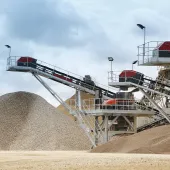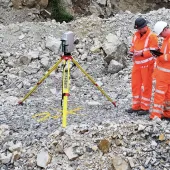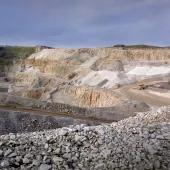50 years of nature recovery through quarry restoration

UK quarry industry celebrates 50 years of restoration awards with documentary film showcase
THE vast and unique contribution of restored quarries to UK nature conservation is being celebrated this week with the 50th anniversary of the industry’s restoration and biodiversity awards.
In the same week as the UN Biodiversity Summit (COP15), and the news that the UK ranks as one of the world's most nature-depleted countries, leading conservationists say quarrying has a critical contribution to make to nature recovery.
Natural England, RSPB, The Wildlife Trusts, and others have joined the Mineral Products Association (MPA) in marking 50 years of the quarry restoration and biodiversity awards.
In October 1971 the UK’s Sand and Gravel Association (SAGA), a precursor to the MPA, held the first quarry restoration awards. Today restored quarries are among the country’s best-known nature reserves and country parks.
Nigel Jackson, chief executive of the MPA, said: ‘The quarrying industry has done more than any other sector to support habitat creation and nature recovery, with more than 83 sq km of priority habitat already created and a further 110 sq km in the pipeline (areas the size of Nottingham and Liverpool respectively). That includes the creation of new wetlands, grasslands, heathlands, and woodlands proven to support some of the UK’s most vulnerable species.
‘I am proud of what the industry achieves, not just providing essential materials that underpin our economy and way of life, but also going above and beyond to deliver for nature. There is a lot of talk about the problems and what needs to happen – meanwhile we have been actively delivering solutions over decades. Quarries uniquely deliver for nature and the track record of the industry over the last 50 years is a success story.’
Tony Juniper, chair of Natural England, said: ‘We have many good examples across the country of really beneficial outcomes for nature that resulted from minerals extraction. The MPA’s biodiversity awards have been really important in inspiring people to see some of the possibilities at hand and setting out those examples of best practice. With a little bit of imagination and forethought, we can actually achieve a great deal for nature as well as extracting the resources we need for different kinds of developments.’
Beccy Speight, chief executive of the RSPB, said: ‘Restored quarries are incredibly important for bird life, because they give us a kind of blank canvas to create new habitats for species which are really struggling. They form part of a joined-up network of habitat in the wider landscape so that species can be more resilient to the challenges they face. Partnership is key and one of the things I love about quarry restoration is that it’s nature organizations, planning authorities, quarrying companies and local communities all working together to create new habitats.’
Craig Bennett, chief executive of The Wildlife Trusts, said: ‘Let’s celebrate the partnership between The Wildlife Trusts and members of the MPA over many years, which has been of huge benefit to wildlife. We need to not only put nature into recovery – but also the relationship between people and nature into recovery. My message to members of the MPA is that partnership working, including with Wildlife Trusts, will become increasingly important and if we can do that right we can achieve some really good outcomes for people and for the environment.’
Mark Russell, executive director of the MPA, said: ‘The vital role quarries play in nature conservation is one of the industry’s best-kept secrets. Maybe that’s because by the time a well-restored quarry scheme has come to fruition, most people have forgotten that the site once provided the essential materials for the places where they live, work and play.
‘In England alone there are over 2,000 quarries, covering 64,000 hectares (0.1% of the country's land area) all of which will be eventually restored. Through careful planning, imaginative design and innovative engineering, each site is an opportunity to create a new landscape where rare and endangered species can thrive.
‘No other industry comes close to being able to achieve this – indeed, the mineral products sector was restoring land to enhance nature decades before the term ‘biodiversity net gain’ was coined. No surprise then that the MPA was the first trade association to publish a biodiversity strategy more than a decade ago.’
Today more than 80 restored quarries make up the MPA’s virtual National Nature Park which also features visitor centres, nature trails and educational facilities. Restoration work has also nurtured long-standing partnerships with numerous conservation organizations, many of whom take over the running of restored sites as nature reserves for all to enjoy.
The 50th anniversary of the quarry restoration awards is being celebrated with a special documentary film that premiered this week. Filmed on location at several restored quarries, the documentary is hosted by BBC Presenter Sybil Ruscoe who is joined by leading nature conservationists plus representatives from partner organizations and MPA member companies. A celebratory brochure has also been produced showcasing the breadth of achievements and diversity of priority species supported.









